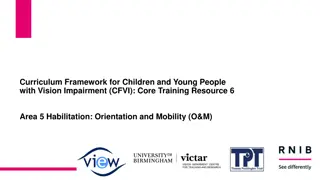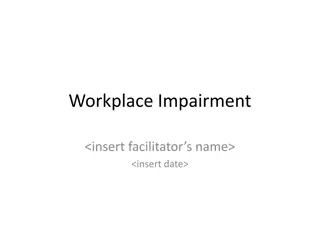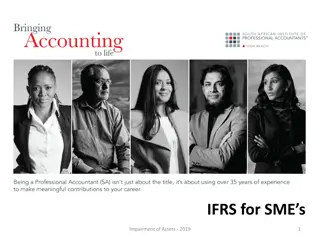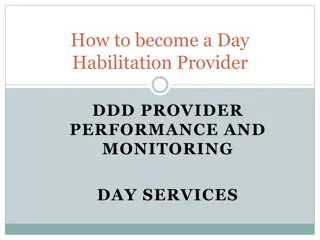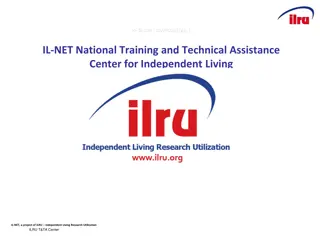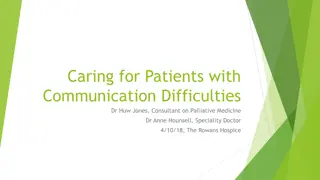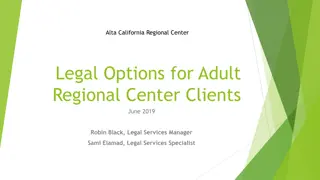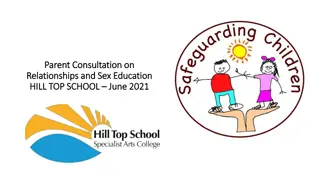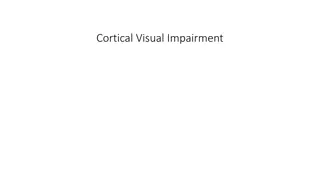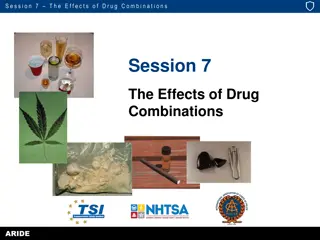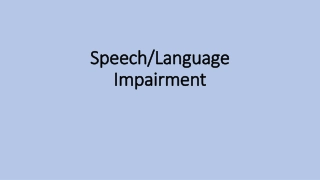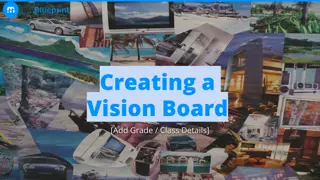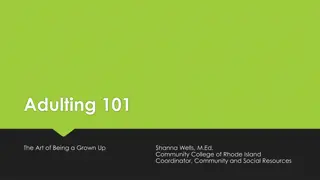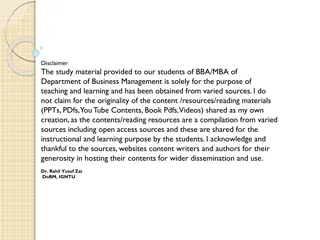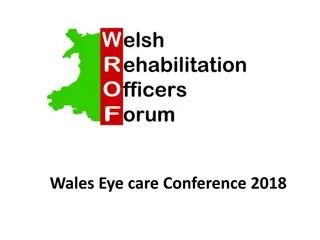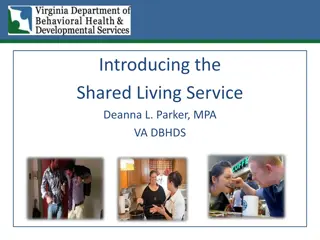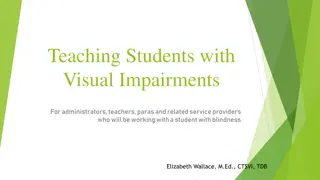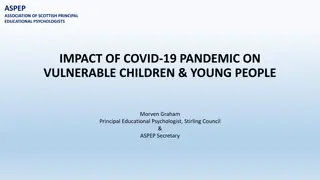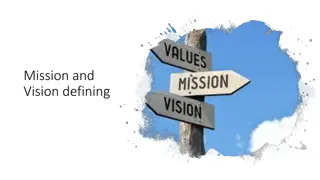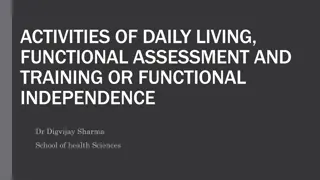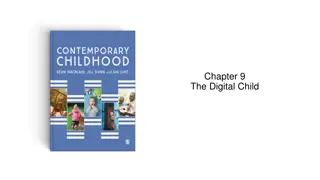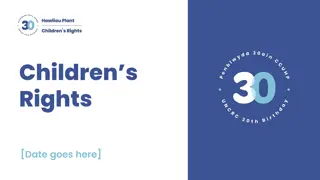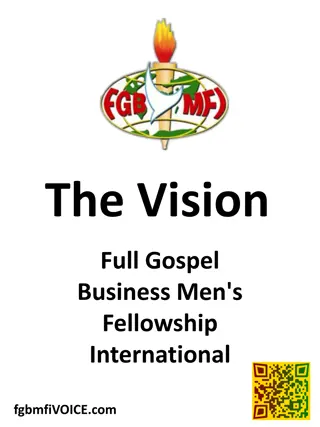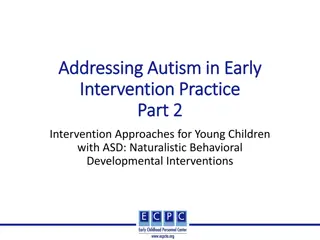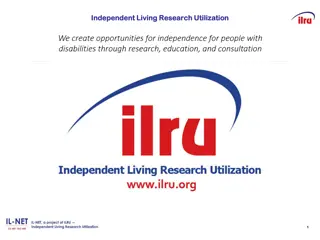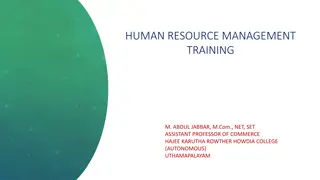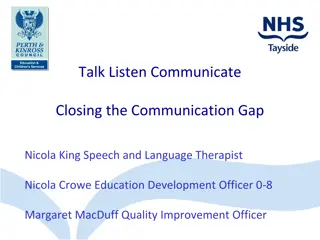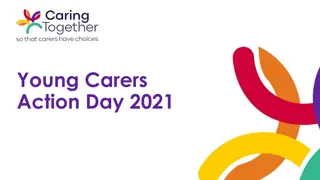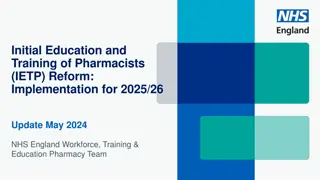Habilitation: Independent Living Skills Training Resource for Children and Young People with Vision Impairment
The Curriculum Framework for Children and Young People with Vision Impairment (CFVI) provides core training resources focusing on Area 6 - Habilitation: Independent Living Skills (ILS). This resource aims to introduce the concept of habilitation, explore barriers to inclusion, and offer intervention approaches for learners with vision impairment. The framework emphasizes the importance of developing everyday skills to promote independence, overseen by Qualified Registered Habilitation Specialists (QRHS) in collaboration with families and professionals.
Download Presentation

Please find below an Image/Link to download the presentation.
The content on the website is provided AS IS for your information and personal use only. It may not be sold, licensed, or shared on other websites without obtaining consent from the author. Download presentation by click this link. If you encounter any issues during the download, it is possible that the publisher has removed the file from their server.
E N D
Presentation Transcript
Curriculum Framework for Children and Young People with Vision Impairment (CFVI): Core Training Resource 7 Area 6 Habilitation: Independent Living Skills (ILS)
Project Partners There are 4 partner organisations involved in the CFVI project. The production of these training/continuing professional development materials was led by VIEW (The Professional Association for the Vision Impairment Education Workforce), in association with a consultation group of stakeholders working in the field of VI Education.
Curriculum Framework for Children and Young People with Vision Impairment (2022, p.15)
Training Objectives (1) The objectives of this training resource are to provide: an introduction to Area 6 of the CFVI - Habilitation: Independent Living Skills (ILS). an overview of what 'habilitation' means, how it differs from 'rehabilitation', and where this specialist input sits within the broader curriculum. examples of potential barriers to inclusion for learners with vision impairment and targeted intervention approaches we can draw upon to help reduce these. some links to useful resources/websites.
Training Objectives (2) Customisable slide if needed (see notes for the previous slide which give examples of training objectives that you could consider, depending on the nature of your presentation).
About this area: Habilitation: Independent Living Skills (ILS) This area of the framework recognises the importance of supporting children and young people with vision impairment to develop the day to day skills they need in order to live as independent a life as possible. Much of the teaching and support will be undertaken by, or under the direction of a Qualified Registered Habilitation Specialist (QRHS) who will work in liaison with families/carers and professionals such as occupational therapists and specialist teachers.
Identifying potential barriers to access (1) Situation A KS1 child without a vision impairment getting ready for PE in class. What does vision tell the student in this situation? where fastening is on PE kit bag; range of fasteners others might have. quickly able to identify items of clothing within the bag and the correct way of putting on e.g. ensuring a round necked T-shirt is put on the right way round. where they put their school clothes as they change. may not need to be too organised in this respect and can easily locate when returning from PE. that others are independent in dressing and undressing. the speed at which others dress/undress. what the kit of others looks like (if there is not an official school kit). ?
Identifying potential barriers to access (2) Situation A KS1 child with a vision impairment getting ready for PE in class. Inclusive strategies to reduce barriers to access ?
Identifying potential barriers to access (3) Child/young person brief profile Add here Situation ?
Why a focus on this area is important (1) Why is the development of independent living skills important for all children and young people?
Why a focus on this area is important (2) Why is a focus on this area important for children and young people with vision impairment? Many personal independence skills are learnt incidentally and reinforced through watching and learning from others. Children and young people with a vision impairment may not be able to observe and watch others to the same extent so cannot see what others do and so learn from what they see (e.g. learning the norms of 'sighted behaviours in different contexts such as eating habits, posture etc). Targeted intervention approaches may be required to support children and young people with vision impairment to develop the day-to-day skills they need in order to live as independent a life as possible.
Why a focus on this area is important (3) Individual input and support in this area will be informed by: The nature and severity of the vision impairment. If the vision impairment was from birth or later onset or if the condition is degenerative, and whether there are other physical or learning needs. The range of experiences and level of support the child/young person has received at home. Involvement of Qualified Registered Habilitation Specialists (QRHS) working collaborating with other professionals (beyond educators) such as occupational therapists.
Why a focus on this area is important (4) Independent Living Skills are progressive and cumulative during childhood and adolescence. There are the immediate goals for children and young people e.g. eating, social skills, personal care, food preparation skills. There are also longer term goals which link to CFVI Area 11: Preparing for Adulthood including: Independence in everyday living skills: including, for example, personal hygiene, managing a home, money management, banking, making appointments. Making and maintaining relationships (links to Area 9 of CFVI). Self advocacy and personal agency. Assessment of risk. Future economic well-being (e.g. shopping, banking). Not stepping in immediately to help when a child looks to be challenged with a particular skill can help enable the longer-term skill development: the short-term IS the long-term!
Examples of targeted intervention approaches for Area 6 listed in CFVI (1) Eating, using cutlery, understanding the social skills around eating, including eating at a social occasion. Toileting (in collaboration with other professionals). Personal hygiene. Dressing, such as using clothes fastenings and appearance (including make-up and beauty). Cooking and food preparation.
Examples of targeted intervention approaches for Area 6 listed in CFVI (2) Safe use of kitchen appliances and specialist technology, such as talking scales and liquid level indicators. Shopping. Cleaning. Laundry skills. Managing the home, for example changing batteries, replacing lightbulbs.
Examples of targeted intervention approaches for Area 6 listed in CFVI (3) Technology skills for living such as online shopping, food identification, online banking and using technology to read printed mail. Time management and calendar organisation. Organisational skills. Money management. Leisure. Managing and understanding one s health. Social, emotional and cognitive independent living skills, including making and maintaining relationships. Self-advocacy.
Why a focus on this area is important for (name of child/young person); what interventions are in place? Details of pupil s vision impairment. How it influences the development of their personal independence skills. What interventions are in place to promote these skills. What are the envisaged outcomes. Who delivers/works on these outcomes.
Summing up Many personal independence skills are learnt and reinforced through vision. For children/young people with vision impairment, targeted intervention approaches within inclusive learning environments (See CFVI, Area 1) are required to promote the development and effective use of their personal independence skills. Qualified Registered Habilitation Specialists are specifically trained to support the development of adaptive and systematic skills in this area. Children and young people require regular opportunities to practise and embed these skills in natural contexts. Collaborative working with the child/young person, family and educators is important to maximise the use and development of these skills. ILS cannot be taught in isolation by Hab Specialists!
What resources are available The Bookshare Hub hosting resources to support the delivery of the CFVI is available from the RNIB (External) Of particular relevance to this area is the Habilitation (ILS) category of the CFVI Resource Hub The CFVI provides a list of targeted intervention approaches (page 25): Curriculum Framework for Children and Young People with Vision Impairment | RNIB Habilitation VI UK has lots of useful information Guide Dogs UK Charity For The Blind And Partially Sighted has lots of useful information about habilitation for children, young people and families
References Hewett, R., Douglas, G., McLinden, M., James, L., Brydon, G., Chattaway, T.,Cobb, R., Keil, S., Raisanen, S., Sutherland, C., Taylor, J., (2022) Curriculum Framework for Children and young People with Vision Impairment[CFVI]: Defining specialist skills development and best practice support to promote equity, inclusion and personal agency. RNIB Hayton, J., & Wood, A. (2022). Quality Standards: Delivery of Habilitation Training (Mobility and Independent Living Skills) for Children and Young People with Visual Impairment (2nd ed.). RNIB Willis, l., Mort, S., Turton, D., Priestley, L., Reed, K., Lambert, A., Adams, S. (2022). Habilitation Tracker 2.0: Keeping Track of Progress in Habilitation. Habilitation VI UK


